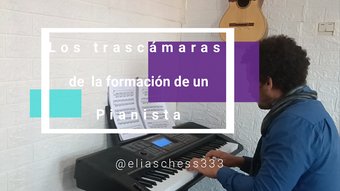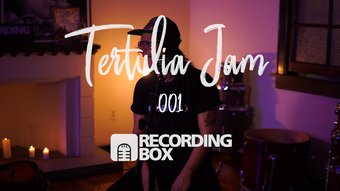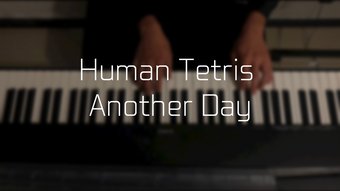El cómo yo he entendido la armonía musical. Entrega 03: desentrañando los secretos de las séptimas
6
About :
ESPAÑOL
Un gran abrazo amigos de MUSIC, y del mundo entero. Contento de continuar esta interesante saga del cómo yo he entendido la armonía musical, en esta oportunidad comenzaremos a desentrañar los secretos de los acordes séptimas, y digo que es el comienzo porque estaremos enfocados en el caso de la Escala Menor Eólica o Natural, la cual tiene las misas alteraciones que la escala mayor. Para fines didácticos, seguiremos trabajando con la tonalidad de DO MAYOR, la misma que se trabajó en las publicaciones anteriores: Publicación 01, Publicación 02.
ENGLISH
A big hug friends of MUSIC, and the whole world. Glad to continue this interesting saga of how I have understood musical harmony, this time we will begin to unravel the secrets of the seventh chords, and I say it is the beginning because we will be focused on the case of the Aeolian or Natural Minor Scale, which has the same accidentals as the major scale. For didactic purposes, we will continue working with the key of C major, the same key we worked on in the previous publications: Publication 01,Publication 02.

En este sentido te invito a que revises la publicación 01, donde explico a profundidad el concepto de escala, y la construcción de la escalas mayor y su relativo menor (eólica, armónica y melódica). En la publicación 02 abordamos la creación de acordes mayores y menores con el concepto de triada. Ahora incorporamos un nuevo concepto, que es el concepto de Tétrada, que es la conformación de un acorde por cuatro notas diferentes, en este sentido y atendiendo al título de la publicación esa cuarta nota que se agrega es el séptimo grado con respecto a la tónica del acorde que se analice . Por lo tanto en el recurso audiovisual hicimos un análisis detallado para el caso de La Menor, agregando la nota Sol, surgiendo el acorde de la menor séptima, y desciframos la formula general que rige este tipo de acordes:
In this sense I invite you to review publication 01, where I explain in depth the concept of scale, and the construction of major scales and their relative minor (Aeolian, harmonic and melodic). In publication 02, we dealt with the creation of major and minor chords with the triad concept. Now we incorporate a new concept, which is the concept of Tetrad, that is the conformation of a chord by four different notes, in this sense and attending to the title of the publication that fourth note that is added is the seventh degree with respect to the tonic of the chord that is analyzed. Therefore, in the audiovisual resource we made a detailed analysis for the case of A minor, adding the note G, thus creating the chord of the minor seventh, and we deciphered the general formula that governs this type of chords:


Y en el proceso de armonizar La Menor Eólica con este criterio, se obtienen un total de 03 séptimas menores, las cuales se indican a continuación:
And in the process of harmonizing A Aeolian Minor with this criterion, a total of 03 minor sevenths are obtained, which are indicated below:



En el caso de los acordes mayores en el recurso audiovisual trabajamos con la triada de Fa Mayor y para formar la tétrada agregamos la séptima con respecto a la tónica Fa, es decir, la nota MI, surgiendo así el acorde de Fa Mayor Séptima, deduciendo así también la fórmula que rige este tipo de acordes, la cual al igual que la anterior fórmula se aplica a cualquier tonalidad, en publicaciones futuras realizaremos aplicaciones prácticas de estas ideas.
In the case of the major chords in the audiovisual resource we work with the F major triad and to form the tetrad we add the seventh with respect to the tonic F, that is to say, the note E, thus arising the chord of F major Seventh, thus also deducing the formula that governs this type of chords, which like the previous formula applies to any tonality, in future publications we will make practical applications of these ideas.


En el proceso de armonización de la escala de La Menor Eólica tenemos dos mayores séptimas, específicamente Do Mayor Séptima y Fa Mayor Séptima, las cuales se indican a continuación:
In the harmonization process of the A Aeolian A Minor scale we have two major sevenths, specifically C Major Seventh and F Major Seventh, which are indicated below:


Y finalmente en ese proceso de desentrañar los secretos de las séptimas, al hacer la Tétrada en la triada de Sol Mayor, agregando la séptima con respecto a la tónica, es decir, la nota Fa, surge una dominante séptima, es decir, Sol Séptima “G7”, y estudiamos también la formula que rige a las dominantes séptimas, cuya función principal en el proceso de armonización es crear tensión en ese proceso de llegada a la tónica, es decir, G7 crea la tensión para caer en el acorde de C “Do mayor”.
And finally, in this process of unraveling the secrets of the sevenths, by making the Tetrad in the G Major triad, adding the seventh with respect to the tonic, that is, the note F, a dominant seventh arises, that is, G Seventh "G7", and we also studied the formula that governs the dominant sevenths, whose main function in the harmonization process is to create tension in the process of reaching the tonic, that is, G7 creates the tension to fall on the chord of C "C major".


En la guitarra este acorde sería de la siguiente manera:
On the guitar this chord would be as follows:

Así como la dominante séptima cumple una función, las tétradas representativas de los acores mayores séptimas y menores séptimas también, ambas se utilizan para sustituir a la tónica, es decir La menor séptima puede sustituir a La menor. En los siguientes casos que estudiaremos mas adelante al armonizar las escalas de La Menor Armónica y La Menor Melódica con el enfoque realizado en esta entrega, surgirán también mas recursos en cuanto a séptimas se refiere, uno de ellos es el relativo a los acordes disminuidos y semi disminuidos, que de hecho en la armonización que hemos realizado en esta publicación surge para el caso de Si, el segundo grado de la escala de La menor. No lo he abordado porque a este tema quiero dedicarle una publicación especial. Espero los contenidos expuestos hayan sido de tu agrado. Un gran abrazo amigos de MUSIC, Hive, 3 SPEAK y del mundo entero. Nos leemos y escuchamos en una próxima oportunidad. Escribió para ustedes:
@eliaschess333
Just as the dominant seventh has a function, so do the tetrads representing the major seventh and minor seventh chords, both are used to substitute the tonic, i.e. A minor seventh can substitute A minor. In the following cases that we will study later when harmonizing the scales of A Minor Harmonic and A Minor Melodic with the approach made in this publication, more resources will also arise as far as sevenths are concerned, one of them is related to diminished and semi-diminished chords, which in fact in the harmonization that we have made in this publication arises for the case of B, the second degree of the scale of A minor. I have not dealt with it because I want to dedicate a special publication to this subject. I hope you have enjoyed the contents of this publication. A big hug friends of MUSIC, Hive, 3 SPEAK and the whole world. We will read and listen to each other in a next opportunity. Written for you:
@eliaschess333
| @eliaschess333 - Director del Video | @eliaschess333- Video Director |
|---|---|
| @normacanaza asistente en la edición del video para seleccionar las mejores tomas, realizadas usando trípode de apoyo | @normacanaza video editing assistant to select the best shots, taken using tripod support |
| Agradecimientos a Servio Romero, por las conversaciones sostenidas en torno a las bases de la armonía musical | Thanks to Servio Romero, for the conversations held on the basis of musical harmony. |
| El video fue editado con Filmora 11 | The video was edited with Filmora 11 |
| El logo de MUSIC es cortesía de la comunidad | MUSIC logo is courtesy of the community |
| Los logos de HIVE y 3SPEAK son cortesía del Proyecto ALIENTO | HIVE and 3SPEAK logos courtesy of the ALIENTO Project. |
| El traductor empleado es DeepL Translator | The translator used is DeepL Translator |
| Los logos empleados de redes sociales son de uso libre, a continuación los enlaces: InstagramYoutubeTwitterTikTokFacebook | The logos used in social networks are free to use, here are the links: InstagramYoutubeTwitterTikTokFacebook |
Mis redes sociales - My Social Networks
 |  |  |  |  |
|---|
Show more
Tags :
Woo!
This creator can upvote comments using 3speak's stake today because they are a top performing creator!
Leave a quality comment relating to their content and you could receive an upvote
worth at least a dollar.
Their limit for today is $0!
Their limit for today is $0!
26 views
8 months ago
$
53 views
a year ago
$
¿Sabes bien cómo funciona el Cripple? ¿Comprendes el concepto de Potencial de Curación?Profundicemos
6 views
a year ago
$
9 views
a year ago
$
Intentando vender mi primer legendario dorado: aspectos de interés a tener en cuenta en Peakmonsters
1 views
6 months ago
$
More Videos
5 views
a year ago
$
35 views
3 years ago
$
4 views
2 years ago
$
6 views
2 years ago
$
7 views
2 years ago
$
3 views
a year ago
$
3 views
2 years ago
$
4 views
9 months ago
$
4 views
3 years ago
$
2 views
3 weeks ago
$
2 views
a week ago
$
11 views
2 years ago
$
15 views
2 years ago
$
9 views
a year ago
$
9 views
2 years ago
$
[ESP-ENG] Un día en la isla Cozumel. Quintana roo-México / A day in Cozumel Island. Quintana roo-Mex
7 views
a year ago
$
6 views
8 months ago
$
3 views
2 years ago
$
43 views
2 years ago
$
15 views
9 months ago
$
7 views
2 years ago
$
20 views
a year ago
$
6 views
10 months ago
$
16 views
7 months ago
$





























Comments:
Reply:
To comment on this video please connect a HIVE account to your profile: Connect HIVE Account